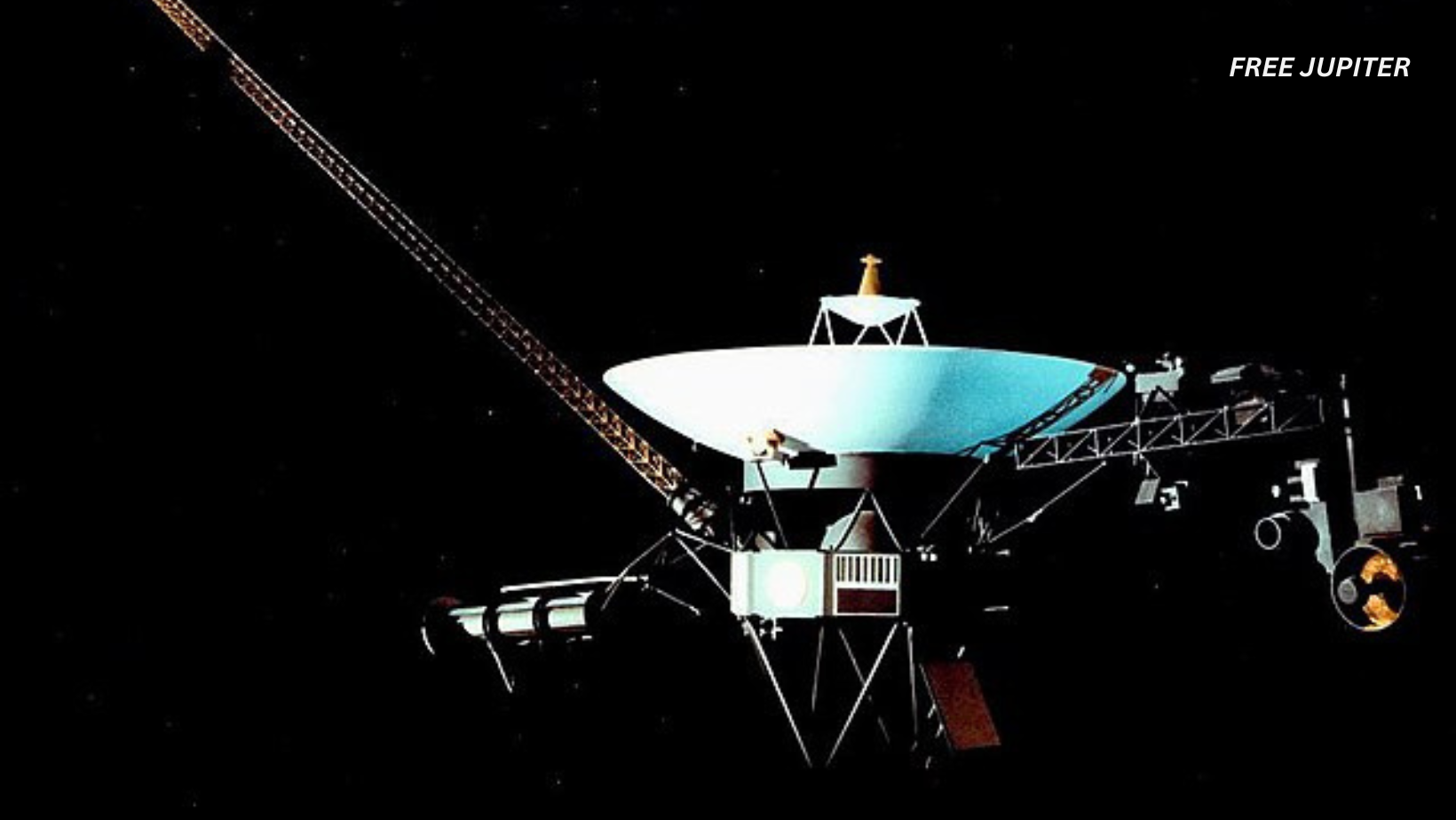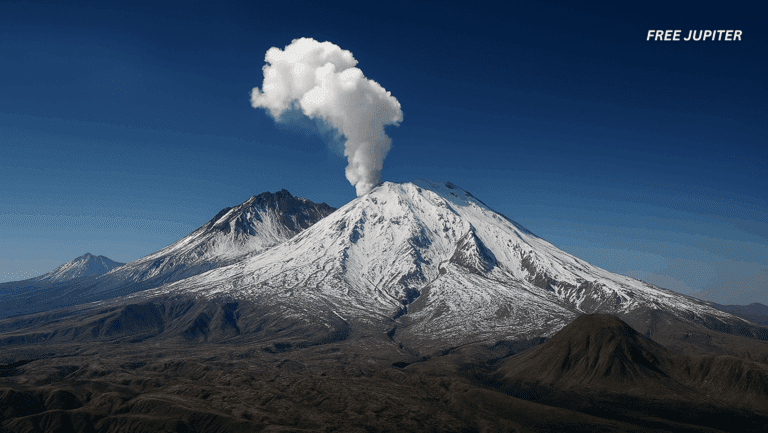Friendly Note: FreeJupiter.com shares general info for curious minds 🌟 Please fact-check all claims—and always check health matters with a professional 💙
Voyager 1, humanity’s farthest and longest-lived spacecraft, has once again proven the resilience of human engineering and ingenuity. More than 16 billion miles from Earth, this iconic probe’s thrusters, dormant for over two decades, have been brought back to life by NASA engineers, ensuring the continuation of a mission that has expanded our understanding of the cosmos for nearly half a century.
Voyager 1: A Pioneer Beyond the Solar System
Launched on September 5, 1977, Voyager 1 was originally designed to study the outer planets of our solar system, including Jupiter and Saturn, as well as Saturn’s largest moon Titan. It was selected over its twin, Voyager 2, to perform the Titan flyby due to the moon’s dense atmosphere, which promised rich scientific returns. After completing its planetary mission, Voyager 1 continued its journey outward, crossing the heliopause-the boundary where the Sun’s influence wanes-in August 2012, becoming the first human-made object to enter interstellar space.
Voyager 1’s scientific payload, consisting of 11 instruments, has provided groundbreaking data on planetary atmospheres, magnetic fields, and cosmic rays. Despite its age, the spacecraft remains operational, powered by three radioisotope thermoelectric generators (RTGs) that convert heat from decaying plutonium-238 into electricity. Although the power output has declined to less than half of its initial value, Voyager 1 continues to send valuable data back to Earth, a testament to its robust design and the careful management by mission engineers.
The Crucial Role of Thrusters in Deep Space
Maintaining orientation is vital for Voyager 1 to keep its high-gain antenna pointed precisely toward Earth, enabling communication across the vast gulf of space. The spacecraft uses a sophisticated Attitude and Articulation Control Subsystem (AACS) that includes multiple sets of hydrazine thrusters to control its roll, pitch, and yaw. Among these are the primary roll thrusters, which maintain the spacecraft’s alignment with a guide star, and backup roll thrusters that have been relied upon since the primary set ceased functioning in 2004.
Thrusters are small rocket engines that provide precise bursts of force to adjust the spacecraft’s orientation. Over time, residue from the thruster propellant can accumulate, risking blockages that could render the thrusters inoperable. This gradual clogging poses a serious threat to Voyager 1’s ability to maintain its attitude and, by extension, its communication link with Earth.
Read more: Researchers Say That The Universe May End Sooner Than We Thought
The Challenge: Communication Downtime and Thruster Failure Risk
In 2025, NASA faced a unique challenge. The Canberra Deep Space Network (DSN) antenna, the only facility capable of sending commands strong enough to reach Voyager 1, was scheduled for extensive upgrades that would take it offline from May 2025 until February 2026. During this period, NASA would be unable to communicate with Voyager 1, making any thruster failure potentially mission-ending.
Compounding this was the looming risk that the backup roll thrusters, which have been in use since 2004, might fail due to clogging from propellant residue. Without a functioning set of roll thrusters, Voyager 1 could lose its orientation, causing its antenna to drift away from Earth and severing communication permanently.
A Bold and Creative Solution: Reawakening the “Dead” Thrusters
Faced with these risks, NASA engineers revisited the long-dormant primary roll thrusters. These thrusters had been considered irreparable since 2004 when two internal heaters-critical for preventing propellant freezing and ensuring thruster operation-lost power. The loss rendered the primary roll thrusters inactive, and the team had relied solely on the backup thrusters ever since.
The breakthrough came from a careful review of the spacecraft’s circuitry. Engineers theorized that a power supply switch controlling the heaters might have been flipped to an incorrect position. If they could command the switch back to its original setting, the heaters might power up again, thawing the thrusters and restoring their function.
This fix was not without risk. The heaters only operate if the thrusters are turned on, but activating the thrusters without heaters could cause propellant to freeze or even trigger a small explosion if the spacecraft drifted too far from its guide star during the process. The team had to carefully sequence commands and monitor telemetry to avoid any catastrophic failures.
Testing and Triumph: The March 2025 Thruster Revival
The engineers began testing earlier in 2025, racing against the impending communications blackout caused by the Canberra antenna upgrade. On March 19, they sent commands to Voyager 1 to switch the heater circuits back to their original configuration and activate the primary roll thrusters.
Due to the immense distance-over 16 billion miles-the signal took more than 23 hours to travel to Earth, and the return data took just as long. When the telemetry arrived, it showed a clear rise in thruster heater temperatures, confirming the thrusters had successfully powered up. This success was a significant morale boost for the team, proving that the seemingly “dead” thrusters could indeed be revived.
Todd Barber, the mission’s propulsion lead at NASA’s Jet Propulsion Laboratory, described the moment as “glorious,” highlighting how this unexpected fix was another “miracle save” for Voyager 1.
Voyager 1’s Technical Sophistication and Longevity
Voyager 1’s longevity is a marvel of engineering. The spacecraft weighs about 1,592 pounds (722 kilograms) and carries 16 hydrazine thrusters for attitude control. Its three RTGs initially produced around 470 watts of electrical power, which has declined to approximately 220 watts as of 2025. This power supports the spacecraft’s instruments, communication systems, and thrusters, with careful power management required to keep critical systems operational.
The spacecraft’s communication system includes a 3.7-meter high-gain antenna that transmits data to Earth using X-band frequencies at rates up to 7.2 kilobits per second. The Deep Space Network’s antennas in California, Spain, and Australia receive these faint signals, with the Canberra antenna playing a vital role due to its sensitivity.
Voyager 1’s onboard computers, though primitive by today’s standards, manage command decoding, fault detection, antenna pointing, and sequencing. The spacecraft’s design allows it to operate autonomously for long periods, essential given the communication delays of over 23 hours each way.
The Importance of the Deep Space Network and Future Missions
The DSN upgrades, including the Canberra antenna’s enhancements, are crucial for supporting upcoming missions, such as crewed lunar landings under NASA’s Artemis program and other deep space explorations. These upgrades increase communication capacity and reliability, building on the foundation laid by Voyager’s discoveries.
Voyager 1’s continued operation until at least 2025-and possibly beyond-provides invaluable data about the interstellar environment, helping scientists understand cosmic rays, magnetic fields, and plasma waves outside the Sun’s influence. The mission’s success inspires future exploration and demonstrates the durability of well-designed spacecraft.
Read more: A Hidden Mutation in the Human Genome Is Giving Some People an Extraordinary Edge
Looking Forward: Voyager’s Enduring Legacy
With its thrusters restored, Voyager 1 is better equipped to maintain orientation and communication during the upcoming period of limited contact. This achievement extends the mission’s life, allowing it to continue its journey through interstellar space and send back data that no other spacecraft can provide.
Voyager 1’s story is one of human curiosity, perseverance, and technical mastery. It reminds us that even after decades, space exploration missions can yield surprises and breakthroughs. As the spacecraft ventures further into the unknown, it carries not only instruments but the spirit of exploration that drives humanity to reach beyond our home planet.










